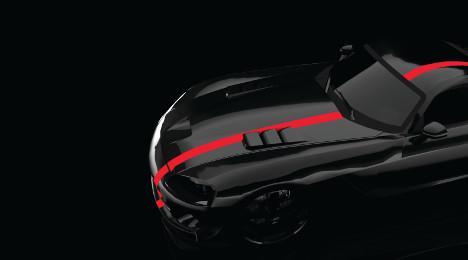4 Questions with Len Short of LotLinx

By subscribing, you agree to receive communications from Auto Remarketing and our partners in accordance with our Privacy Policy. We may share your information with select partners and sponsors who may contact you about their products and services. You may unsubscribe at any time.
CARY, N.C. –
In the latest installment of the annual Power 300 issue of Auto Remarketing, we go behind the scenes with some of the leading companies in the used-car space and their top executives with a few Q&A features.
Next up in this series is Len Short, founder and chief executive officer at LotLinx. The emailed Q&A is below:
Auto Remarketing: What advice would you give to dealers on using big data to help navigate inventory management and wholesale purchases?
Len Short: Until now most of the technology available to dealers has been centered on what I would call “supply side data.” This means it’s been heavily centered around inventory trends.
Inventory levels, turn rates, pricing and volume — it’s all important, but only half the story. And it tends to be restricted to a rear view that looks back at what has happened versus looking forward to what will happen.
We are a lot more interested in data from the “demand side” of the equation. Specifically, the volume, shopping actions and intensity of in-market buyers. Because it’s demand that will move the market. Pricing trends and inventory turn are a result of demand, not a leading indicator.
Subscribe to Auto Remarketing to stay informed and stay ahead.
By subscribing, you agree to receive communications from Auto Remarketing and our partners in accordance with our Privacy Policy. We may share your information with select partners and sponsors who may contact you about their products and services. You may unsubscribe at any time.
There are significant new technologies we have built to sense and respond to buyer demand that has had a significant impact to gross profit and inventory turn acceleration.
AR: How much more challenging is it today than it was 10 years ago for a dealer to get traffic to their website?
LS: What has happened in this market over the past 10 years is an exponential multiplication of available traffic. Media companies have been busy at work manufacturing clicks, especially in the automotive category.
These are the challenges of our time. Lots of crafty digital media hackers creating fake news and fake clicks. The challenge for the dealer, and all of us, is to sort out what’s real.
Traffic isn’t the issue; quality is. We are seeing an ever-increasing dilution of digital media, and frankly, an epic waste in most dealer's digital budgets. The goal for the dealer is to find the platforms that, by their design and model, block the click-bait and deliver real buyer shopping actions.
This is a big issue. Outside of payroll, advertising expense is a dealer’s single largest cost of sales. And as we all know, digital is the lion's share of every dealer’s spend. So it’s easy to blow your margin and your business on bad digital media decisions.
AR: What are some of the latest trends in car-buying that impact your business the most?
LS: I wouldn’t say “latest” here, I would say “accelerating.”
The trends that impact a dealer’s business, and by extension our business, are a continued acceleration of the move to digital. More specifically, the move to mobile as the foundation of the buying process. Dealers have had to invest heavily in keeping up with the evolving consumer, and many ask “are we there yet?”
Frankly, as a whole, we aren’t. The lack of sophisticated mobile shopping offerings and engagement platforms is staggering, and it's another source of significant cost to the dealer. I had a dealer tell me once: “Do you know what the internet has been for us, Len? It’s been 10 years of three guys a day coming through my door with another $3,000-a-month thing I’ve got to buy to make it work!”
It certainly feels like that. A constant stream of vendors telling you you’ve got it wrong. But in fact, the opportunity for smart dealers to gain an edge by making simple improvements has never been greater.
AR: What do you see as the biggest challenge for your company, and what is its primary focus to maintain and/or grow its influence on the automotive industry?
LS: Education. We knew right from the start that dealers are smart, savvy players in a tough business.
A lot of people come from outside the car business and start preaching to dealers, and all too often its feels like they’re talking down at them. Telling them they are doing it “all wrong.”
What the outsiders miss is that they are the ones that are clueless about what really drives the car business and that they would, in fact, quickly become roadkill if they had to walk in a dealer’s shoes for a day.
Now, certainly there are things dealers can learn from outside the car business, but you need to gain their trust to start that conversation. That's where we try to start. With true respect for the dealer and his/her business, and a good dose of humility about how we can help them.
It takes time. And you can only succeed if you love the car business. We love the car business and the people who make it great, so it's easy for us to be patient.


